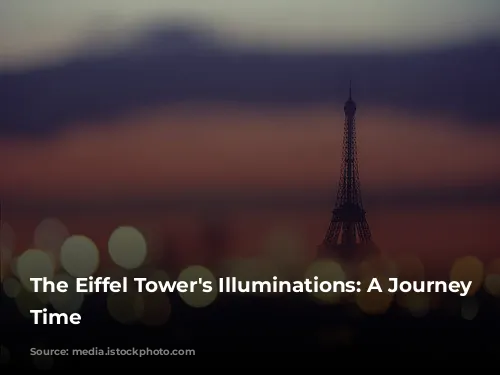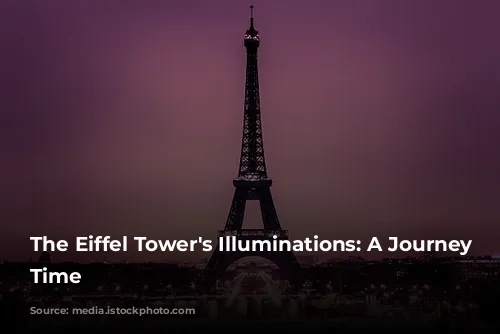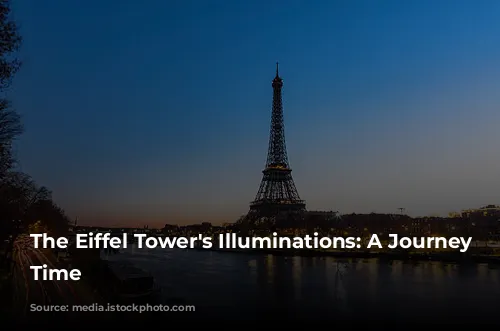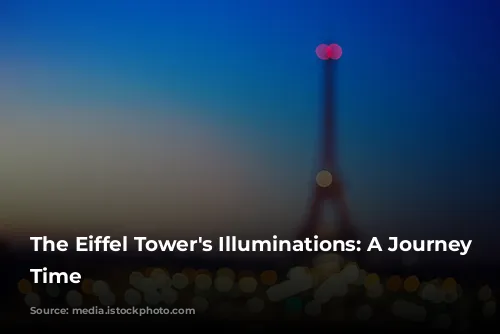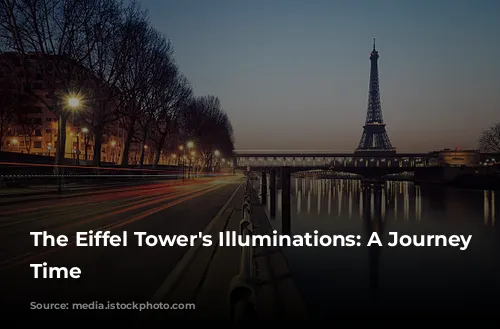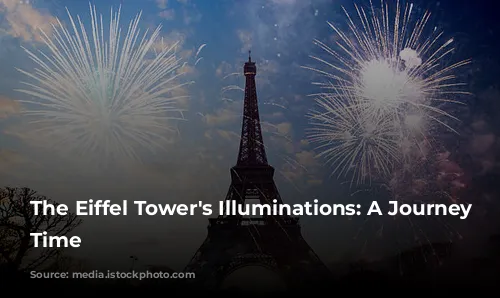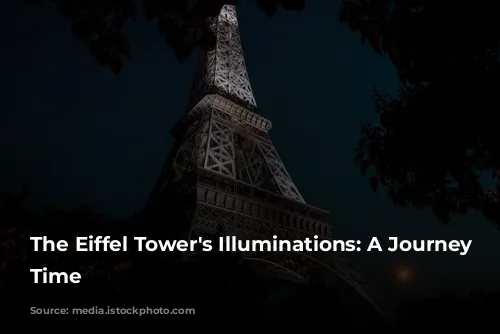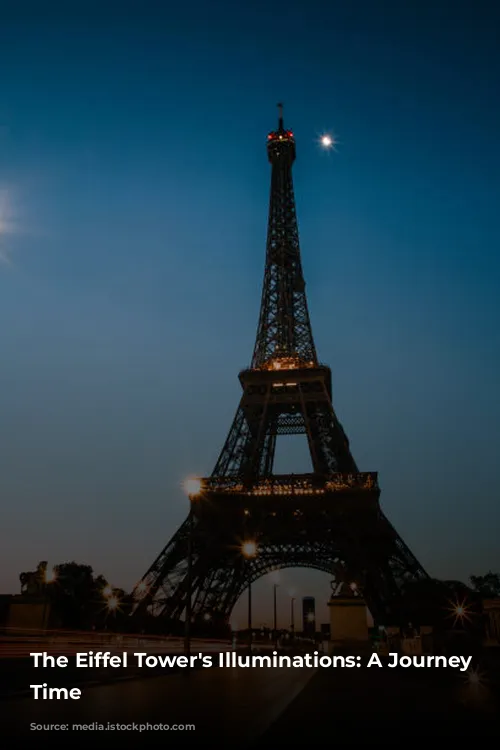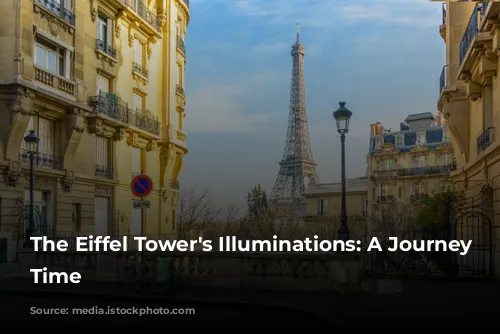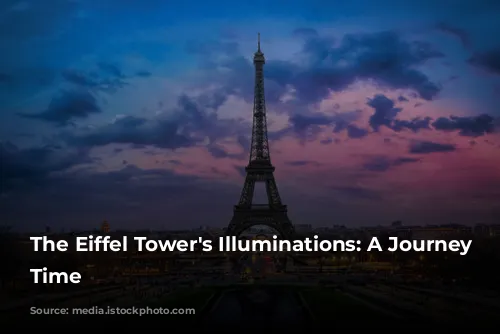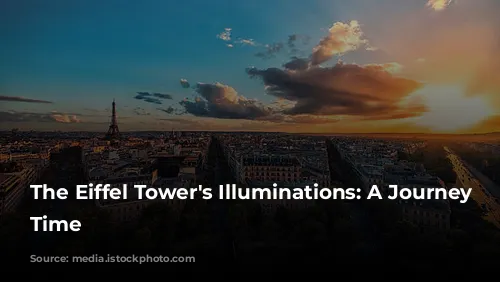The Eiffel Tower is not only a symbol of Paris, but it also shines brightly during the night, illuminating the City of Lights. The Iron Lady’s mesmerizing light shows have captivated visitors for over a century, each era leaving its unique mark on the iconic structure. Let’s embark on a journey to uncover the history of the Eiffel Tower’s illuminations and discover the best ways to experience this magical spectacle.
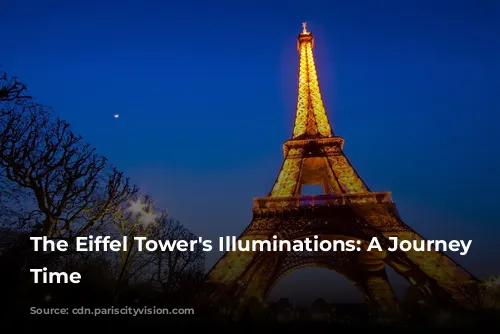
Unveiling the Iron Lady’s Lights
Curious about the Eiffel Tower’s nightly glow? You’ll be happy to know that it gleams every evening, casting its magic over the city. From sunset until 1 AM, the Tower’s lights illuminate the Parisian skyline. During the summer months, the show extends to 2 AM, offering an extra hour of enchanting views.
But there’s more to the Eiffel Tower’s nighttime display than just a steady stream of light. Every hour, the Iron Lady undergoes a spectacular five-minute sparkle, creating a breathtaking symphony of light that will surely captivate you.
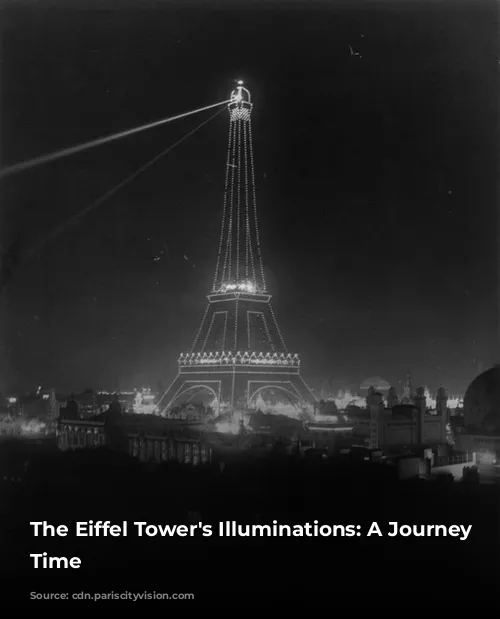
Finding the Perfect Viewpoint
With so much to see and experience, you might wonder where to find the best vantage point to appreciate the Eiffel Tower’s nighttime splendor. Look no further! From the Trocadero to the Seine River cruises and even the Montparnasse Tower, there are countless spots to soak in the mesmerizing glow of the illuminated Eiffel Tower.
A Timeline of Illuminations: From Gaslight to LED
The Eiffel Tower’s light shows have evolved significantly since their inception, showcasing a fascinating history of technological advancements and artistic expression.
Early Illuminations: Gaslight and French Pride
The idea to illuminate the Tower came about as early as 1889, during the Universal Exhibition. The initial approach used gaslights housed in opalescent glass globes to cast a soft glow over the structure. A lighthouse, strategically placed, projected the colors of the French flag, adding a touch of national pride to the spectacle.
In 1900, the Universal Exhibition saw a significant upgrade in illumination technology. 5,000 light bulbs were strategically placed on the Tower’s facades, creating a more dazzling display that embraced the dawn of electricity.
The 1920s and 1930s: A Symphony of Colors and a Giant Clock
The 1920s and 1930s witnessed a burst of creativity and innovation in the Eiffel Tower’s illuminations. The Citroen Group seized the opportunity to showcase their brand, illuminating the Tower with 250,000 multicolored lamps, creating a spectacle visible from 40 kilometers away. This bold move transformed the Eiffel Tower into a giant billboard, showcasing the power of advertising in an era of industrial growth.
The 1930s saw the installation of a massive 15-meter wide clock tower with color-changing minute and second hands. This unique addition added another dimension to the night time spectacle, offering a fascinating blend of art and timekeeping. Sadly, due to the high costs associated with maintaining this elaborate display, the clock tower was decommissioned in 1936.
The 1937 Arts and Techniques Exhibition: A Symphony of Light and Color
The 1937 Arts and Techniques Exhibition presented a stunning display of lights and colors, transforming the Eiffel Tower into a breathtaking beacon of modernism. André Granet, a renowned artist, designed the illumination scheme, which included an enormous chandelier and 10 kilometers of multicolored fluorescent tubes. Thirty spotlights illuminated the sky, casting a dramatic halo around the structure. The Eiffel Tower’s facades shimmered in white, gold, red, and blue, creating a mesmerizing spectacle that captured the spirit of the era.
The 1970s: A Festive Christmas Tree
The Eiffel Tower’s lights have also been used to celebrate special events, transforming the structure into a festive symbol for the city. In 1978, the Tower was transformed into a giant, luminous Christmas tree, adding a touch of magic to the holiday season. This heartwarming display captured the spirit of Christmas, bringing a sense of joy and wonder to the city of Paris.
The 2000s: A Millennium Celebration and Beyond
The turn of the millennium marked a new era for the Eiffel Tower’s illuminations, with captivating light shows celebrating the passage into the new era and embracing global events.
The New Year’s Eve 2000 light show became a global sensation. Even in 1997, a neon counter was installed to countdown the days leading up to the millennium. As midnight struck, the Eiffel Tower illuminated the city with a fiery waltz of pyrotechnics, creating a truly unforgettable spectacle.
In the following years, the Eiffel Tower’s lights were used to celebrate significant events, such as the Chinese New Year in 2004 and the Europe Festival in 2006.
In 2007, the Rugby World Cup saw the Eiffel Tower transformed into a rugby-themed spectacle. The structure was lit up in green, reminiscent of the stadium’s grass, and adorned with a rugby goalpost, an enormous ball, and a flat screen to follow the match.
The Eiffel Tower has also become a symbol of global awareness for issues like sustainable development and health. In 2007, the Tower’s lights were turned off as part of a “Five-Minute Break for the Planet” initiative. In 2014, the Tower was illuminated in pink to show support for the fight against breast cancer. These powerful gestures show the Eiffel Tower’s commitment to global causes and its role as a symbol of unity and hope.
The Best Way to Experience the Magic
The most rewarding way to discover the history of the Eiffel Tower’s illuminations and the countless stories it holds is to experience it firsthand. Immerse yourself in the magic, and discover why the Iron Lady continues to illuminate the City of Lights, captivating generations with its timeless allure.
